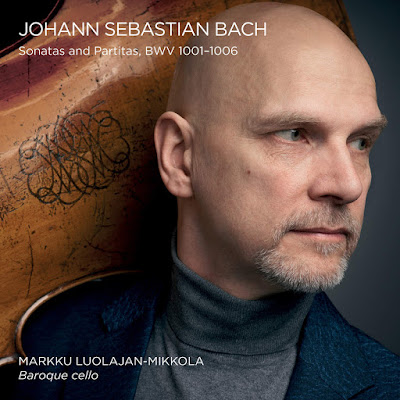With an established fan base built over his two decades with viol
consort Phantasm, Luolajan-Mikkola makes his solo Linn debut in style,
tackling what is considered the pinnacle of Bach's output for
violinists: the Sonatas and Partitas.
With two Gramophone Awards to his name and a reputation synonymous with
excellence, Markku Luolajan-Mikkola is a musician who is at the top of
his profession. Transcribing Bach's hugely popular works for cello,
especially one in Baroque set-up, was not without its risks, although
performing on Baroque cello also offers compelling advantages.
Luolajan-Mikkola takes his interpretative cue from the set-up of the
Baroque instrument, which informs such issues as tuning, vibrato,
fingering and articulation. Performing the Sonatas and Partitas on the
cello is so challenging that it is almost impossible to imagine a
cellist of Bach's day playing them, but Luolajan-Mikkola rises to the
challenge with aplomb.
Luolajan-Mikkola's main aim in this recording has been to capture
emotion and convey expression according to the respective key and
character of each movement, which he achieves in spades. (Linn Records)
Bach's six
solo Sonatas and Partitas might be sacrosanct for violinists - the instrument's
Himalayas, George Enescu called them - but they're regularly pinched by
violists, lutenists, mandolinists and others. So why not baroque cellists?
Phantasm's Markku Luolajan-Mikkola sternly
takes up the challenge on a 1700 instrument, and answers his own question along
the way: it's tough going. Nimble passages (the Second Partita's Gigue) and
chunky, double-stopped passages (the Second Sonata's mighty Fugue) sound like
hard graft, but Luolajan-Mikkola is nothing if not resolute, and he seems to
embrace the struggle as an expressive end in itself. His staunch approach to
articulation is tricky to love, but the payoff comes in the slow movements:
Sarabandes sung low and husky, unadorned, flawed and beautiful. The recording
was made in a medieval church on the south coast of Finland, and the big reverb
provides a warmth [to] the playing. (Kate Molleson / The Guardian)





Intonation problems and no vibrato: a disaster.
ResponderEliminar